 By Pepper Parr By Pepper Parr
December 29th, 2021
BURLINGTON, ON
OPINION
The Provincial Science Table determines the Omicron variant of Covid19 is here and it is going to infect thousands.
The Premier does another media event and implores people to call the telephone number set out in front of him and get vaccinated.
People turned out in droves; some line up at 5:30 in the morning waiting for the GO-VAXX bus to arrive.
 Someone somewhere in the bureaucracy said walk-ns were permitted – all you had to do was show up and you could get your first shot; your second or the booster shot. Someone somewhere in the bureaucracy said walk-ns were permitted – all you had to do was show up and you could get your first shot; your second or the booster shot.
A GO-VAXX bus has the capacity to vaccination 247 people in a day.
It didn’t take much in the way of math skills to see a train wreck coming.
Hundreds were turned away and told to go online and register.
Add to this “dog chasing his tail” scenario: those refusing to get vaccinated at all and complaining about their rights being trampled upon with less than a thought about the rights of others not to be infected by someone not prepared to be vaccinated.
Most responsible organizations are respecting the right not to be vaccinated but insisting that the consequences have to be borne as well. Don’t show up for work until you are vaccinated
The vaccination numbers for the Region of Halton are very good – depending on how you slice and dice them there is a cohort that has a 93% vaccination level (80+ with one dose).
Yet there appears to be some confusion and a lot of frustration. With more than 1000 airline flights cancelled a few days ago it is clear a lot of people aren’t going anywhere.
The numbers today popped up to record 10,436 new cases with 726 hospitalizations and 190 in ICU.
The damage resulting from the Christmas get togethers is coming in. Expect a lot more with New Year celebrations. We have experienced 20 months of living through a pandemic and there is little assurance that once we get through Omicron there won’t be another variant.
People will want to let loose and assure themselves that even if they do get infected the Omicron variant isn’t all that serious.
The tourism and hospitality sectors, particularly at the small business level, have been almost decimated.
Parents don’t know if classes will open in January.
Many people are reluctant to return to jobs that put them in direct contact with people they don’t know who might be infected.
We learned yesterday of a person getting ready to start a new job but having to isolate for ten days – the person isn’t infected but the children are.
The province says more than 176,000 vaccine doses were administered yesterday. 90.7 per cent of Ontarians 12 and older have one dose and 88.1 per cent have two doses.
When we can step back and look at the vaccines the pharmaceutical sector has produced in very short periods of time, yes, we know they are making a bundle but the fact remains – some exceptional science has been done.
There are two levels that continue to disappoint. The Neanderthals who don’t understand what is taking place and refuse to be vaccinated, and the provincial governments that manage to screw it up time after time.
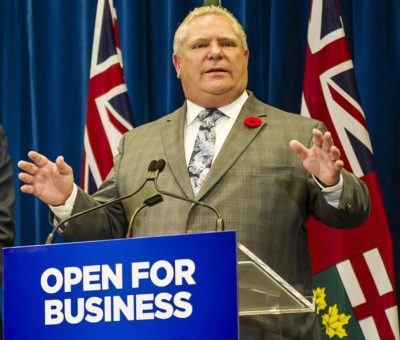 There is more than business at stake. Ontario’s Premier is fixated on businesses being open – failing to realize that it isn’t all about just the economy.
Is anyone convinced there is a clear, well thought out plan to get us through all this? At a time when threats of polarization and social fragmentation prevail it is fair to ask if there is a national collective of trusting citizens able to confront the contemporary challenges.
Keep in mind,, dear reader that come next June – not that far away – the stumble bums in office now will be seeking your vote to continue doing what they have been doing.
Salt with Pepper is the musings, reflections and opinions of the publisher of the Burlington Gazette, an online newspaper that was formed in 2010 and is a member of the National Newsmedia Council.

 By Ray Rivers By Ray Rivers
December 20th, 2021
BURLINGTON, ON
COVID and climate change, not the federal deficit, is driving up prices in this country. Public health measures have led to global supply chain blockages and workplace interruptions. And 2021 has been the absolutely worst year for disastrous climate events, including forest fires, flooding and drought. Prairie grain harvests, for example, are reported to be 30-50% lower this year, which also impacts meat prices.
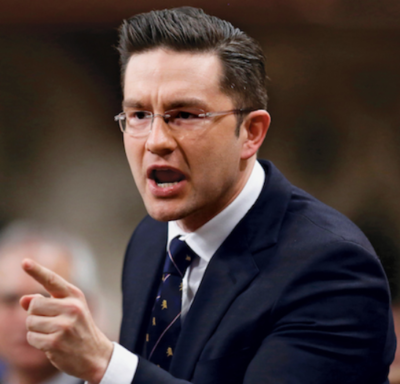 Conservative finance critic Pierre Poilievre in the House of Commons So it’s unfortunate that Conservative finance critic Pierre Poilievre is peddling misinformation. He blames the high deficit and debt levels for the country’s current 4.7% increase in the price of an average basket of goods. He argues that it is because government debt has resulted in too much money being printed and circulated in the economy. But that is not what is happening.
To complicate his argument, Poilievre is demanding federal tax cuts, including the revenue neutral carbon tax, which will….put more money in people’s hands and further increase the deficit.
Poilievre is entitled to his opinion but no reputable economists support his thesis. Canada is actually doing better than most OECD nations when it comes to inflation and with an inflation rate a whole third lower than we’re seeing south of the border. Canada’s inflation has been hovering around 4.7% for the last couple of months, though nobody is discounting that it might climb a little higher before it declines again.
In any case,Ha good chunk of Canada’s economy is inflation proofed – our pensions, income tax deductions, etc. which have been indexed to the consumer price index (CPI). And our health and education programs are all publicly funded. So it’s mostly food and other consumables, some of which are waiting to unload at the ports or sitting in a barge adrift in Vancouver Harbour.
 The Covid19 virus and the variant Omicron along with Climate Change are the structural changes we are going through right now.  And then there is housing. Housing prices have been rising for a while now. And while low interest rates, allowing more people to qualify for mortgages, are partly responsible, the real culprit is the extremely high rate of immigration. Canada’s immigration target is 400,000 new entrants a year, over 100,000 of those looking for housing in the GTA. And then there is housing. Housing prices have been rising for a while now. And while low interest rates, allowing more people to qualify for mortgages, are partly responsible, the real culprit is the extremely high rate of immigration. Canada’s immigration target is 400,000 new entrants a year, over 100,000 of those looking for housing in the GTA.
Some level of inflation is not unhealthy in a growing economy and/or one experiencing some measure of structural change. And structural changes is what we are going through right now, thanks to COVID and climate change. The federal government has a number of tools to slow down inflation should it get out of hand. These include tax increases, reducing government spending and transfers, import and export restrictions and controlling the interest rate.
The Finance Minister just renewed the Bank of Canada’s mandate, which includes exercising monetary policy to raise interest rates and attempt to bring inflation down to 2% or less. However, given the still shaky economic situation with an ongoing pandemic, nobody should expect the Bank to jack up rates, particularly for the current bout of price increases which reflect an economy very much in transition.
 Higher interest rates will also raise the cost of the government borrowing to finance our debt and deficit. That will lead to increased deficits and possibly eliminate funding for other government programs. In the end higher rates suppress economy activity by reducing consumer demand. That will lead to higher unemployment which no government ever wants. Raising interest rates would push Canada’s international exchange rate up as foreign investors up their Canadian investments to get the higher rates here. That would prompt exchange rate increases and impact Canada’s international competitiveness as our exports become relatively more expensive and imports relatively cheaper.
This is the situation Brian Mulroney found himself in the late 80’s as he attempted to quell inflation with monetary policy. We ended up with higher unemployment, deterioration in our terms of trade and creating the greatest accumulation of federal debt in Canada’s history – that is until the pandemic hit us.
Over-reacting to Canada’s modest inflation rate can be fraught with these potential complications. The Minister of Finance and Bank of Canada are betting that the supply chain blockages will be resolved and the price pressure will lessen. But given where we are with the pandemic rebounding energetically, and climate change throwing curve balls around every corner, nobody is in a hurry to raise interest rates or cut taxes. That is possibly except for Pierrre Poilievre who has no idea what he’s talking about.
 Ray Rivers, a Gazette Contributing Editor, writes regularly applying his more than 25 years as a federal bureaucrat to his thinking. Rivers was once a candidate for provincial office in Burlington. He was the founder of the Burlington citizen committee on sustainability at a time when climate warming was a hotly debated subject. Ray has a post graduate degree in economics that he earned at the University of Ottawa. Tweet @rayzrivers Ray Rivers, a Gazette Contributing Editor, writes regularly applying his more than 25 years as a federal bureaucrat to his thinking. Rivers was once a candidate for provincial office in Burlington. He was the founder of the Burlington citizen committee on sustainability at a time when climate warming was a hotly debated subject. Ray has a post graduate degree in economics that he earned at the University of Ottawa. Tweet @rayzrivers
Background links:
Pierre Poilievre – National Debt – Crop Failures –
Food Prices – Inflation – Fiscal Update –
Actual Fiscal Update – Home Prices –

 By Pepper Parr By Pepper Parr
December 15th, 2021
BURLINGTON, ON
OPINION
The spin masters at city hall are doing everything they can to put the best possible spin on the budget decisions that were made yesterday afternoon.
A media announcement declared: “ City Council approves 2022 budget: 2.87 per cent overall tax increase to maintain City services and infrastructure, and address continued impacts of the pandemic.”
The statement is true – it is a fact – however it isn’t the fact that matters most to you.
You want to know how much the city increased your taxes: THAT number is 4.62% over what the taxes were last year.
That 2.87% number is the result of combining the taxes you will pay to the Boards of Education and the taxes you pay to the Region. The city collects all those taxes from you.
This is not a good budget – not just because of the size of the increase. The Mayor said it was less than the current rate of inflation – which is also true.
The media release also said: “For example, homeowners with a home assessed at $500,000 would pay an additional $111.80 per year or $2.15 per week.
When was the last time you saw a house in Burlington assessed at $500,000? Houses are now in the $850,000 range with $1 million prices showing up regularly.
The spending that the city does is the number that matters to you. And that spending increased by 4.62% over last year.
 Council did manage to reduce the size of the budget Staff had presented – but by less than 1% The five year simulation suggests that we are looking at higher tax increases for a number of years. The best Council could do was shave off less than 1% from the budget Staff gave them.
These are very tough times; everyone knows that. What we have a right to expect is straight up honest answers and information from the people we elect. That seems to be in short supply these days.
It is unusual for municipal counsellors to increase taxes in an election year.
There were a number of way this Council could have gotten the increase into the 3.5% range.
 Getting what she wanted proved to be out of the Mayor’s reach. The problem was Mayor Meed Ward could not convince her council colleagues to see things her way – All, except for ward 6 Councillor Angelo Bentivegna, voted against this budget
Mayor Meed Ward called this “… a true collective effort of Council and staff in service of our community to deal with now needs and plan for our future.”
In truth it is the best this council could do given the level of acrimony between a majority of the council members and the Mayor.
Few are prepared to stand up to the Mayor and wrest the control she now has and ensure that the voices of the others are fairly heard. Councillors Stolte and Kearns need to stand up to the Mayor.
 Ward 3 Councillor Rory Nisan chaired the Budget Committee: prevented Council members from moving motions on more than one occasion. On just about every issue the Mayor has the full support of ward 1 Councillor Kelvin Galbraith and ward 3 Councillor Rory Nisan.
The balance of the other four tend to side with Councillor Sharman who was certainly doesn’t get credit for making sure this budget fully served the people of Burlington.
Galbraith is perhaps not aware of the election race he is going to face next October. There are people in ward 3 considering giving Nisan a run for that council seat.
 Ward 5 Councillor Paul Sharman with his eye on the prize As for the Mayor – you heard it here first – Former Mayor Rick Goldring will run for Mayor in 2022. There is a substantial group that are urging him to run again. He is positioning himself for a run – whether he throws his hat in the ring – only time will tell.
Councillor Sharman will also run for Mayor and because Goldring will take votes away from Meed Ward – Paul Sharman could well be the Mayor of the city for the 2022 – 2025 term.
This terrible budget exercise can and should be seen as the beginning of the 2022 municipal election.
Before then however, there is a provincial election that will take place. There are some changes needed at that level as well.
Salt with Pepper is the musings, reflections and opinions of the publisher of the Burlington Gazette, an online newspaper that was formed in 2010 and is a member of the National Newsmedia Council.

 By Connie Price By Connie Price
December 12th, 2021
BURLINGTON, ON
Have you found yourself calling an organization to resolve a problem and finding that the person you are speaking has a poor command of the English language and you have difficulty understanding what they are saying, The problem is often exacerbated by a poor connection.
Turns out there is an option available that will get you someone who you can understand.
Connie Price, active in a number of community initiatives came across a solution.
Any time you call an 800 number (for a credit card, banking, charter communications, health and other insurance, computer help desk, etc. ) and you find that you’re talking to a foreign customer service representative (with an accent, difficult to understand perhaps in India, Philippines, you can do the following.
 Offshore Call Centre After you connect and you realize that the Customer Service Representative is not working in Canada (you can always ask where they’re located) if you are not sure about the accent).
Say, “I’d like to speak to a Customer Service Representative in Canada.”
The rep might suggest talking to his/her manager, But, again, politely say, “Thank you, but I’d like to speak to a Customer Service Representative in Canada ..”
You will be connected to a representative in Canada – That’s the rule and the LAW.
It takes less than a minute to have your call re-directed to Canada .
Tonight when I got redirected to a Canadian Rep, I asked again to make sure – and yes, she was from Calgary.
Imagine what would happen if every Canadian Citizen insisted on talking to only Canadian phone reps, from this day on.
Imagine how that would ultimately impact the number of Canadian jobs that would need to be created ASAP.
If I tell 10 people to consider this and you tell 10 people to consider doing this – see what I mean…it becomes an exercise in viral marketing 101.
Remember – the goal here is to restore jobs back here at home – not to be abrupt or rude to a foreign phone representative. You will get correct answers, good advice, and solutions to your problem – in real English.
If you agree, please tell 10 people you know, and ask them to tell 10 people they know.
Price adds that she had also learned that Canada Post Customer service is headed to India before the New Year.
This can get a little sticky – people who don’t have a command of the English language will never improve if they are not given an opportunity to use the language.
Racist attitudes slide in here and the complaint is frequently based on race and not the quality of the service.
Some people are hard to understand. Many can be understood – a little patience might be needed.
The issue could be resolved if those Canadian companies who use offshore Call Centres were required to provide a minimum number of hours training people who don’t handle English all that well.
Let’s not let those racist inclinations to come to the surface.
 Connie Price Connie Price is active with the Burlington Senior Community and her local church.

 Pepper Parr Pepper Parr
December 4th, 2021
BURLINGTON, ON
OPINION
Some background on the budget process to put what took place last week in context.
Staff prepare a budget setting out what they believe is needed in the way of funding to operate the city.
They prepare a Capital Budget and an Operating Budget.
 There is a lot of work done to get the drafts of the budget completed including presentations to Council at Standing Committees. There is a lot of work done to get the drafts of the budget completed including presentations to Council at Standing Committees.
That budget is then debated at a Council Standing Committee. Burlington uses BARs (Budget Action Requests) prepared by each council member setting out where they would like to see changes made in specific items.
Those BARs then become the agenda for the budget meeting
This is the process when Council tells staff what they want made in the way of changes.
The work Staff does is administrative; the work done at Council is both administrative and political. Council members have views and projects they want to advance; see it as the individual council member’s agenda.
The Mayor also has an agenda.
And 2020 is an election year.
The budget timeline was to have council do its work on the Tuesday and Thursday and send a recommendation to Council that would be dealt with on December 14th.
That didn’t happen. The four votes required to get a recommendation to Council just weren’t to be had.
 Budget Committee Chair Rory Nisan Between now and the 14th individual council members were asked to review their original decisions and come up with ways they think they could get closer to whatever number is going to be acceptable to the Mayor and Rory Nisan Chair of the Budget Committee.
Council would review the recommendation on the 14th, vote on it and if at least four votes for the budget can be found at council it passes and we would all know what we were looking at in the way of taxes for 2022.
However, if at any point in the process a member asks that the vote be called the Chair has to call the vote. If the Chair doesn’t call the vote he will be challenged this time and forced to call the vote.
Councillor Sharman tried to force a calling of the vote at Standing Committee on Thursday but got stiffed by Chair Nisan who understood the rules better than Sharman.
As messy as all this has been there was one point that everyone agreed upon before the Standing Committee recessed on Thursday – any ideas for changes would be run by Treasurer Joan Ford who would coordinate whatever was put in front of the Standing Committee on the 14th.
 Joan Ford, Executive Director of Finance, has a busy few days ahead of her if there is going to be a Council recommended budget. Ms Ford has a busy weekend ahead of her – she can expect a majority of the members of council to be on the phone to her. Fortunately for Burlington this is a treasurer who knows the budget and the ramifications when changes are made. She has been supported by Lori Jivan who has been crunching the numbers. At some point Ms Jivan will be treasurer somewhere – she has been doing a great job.
As for Mayor Meed Ward she desperately needs a vote from the Committee that recommends a budget.
Without that her re-election prospects are at serious risk. As it is, the myth that she leads a Council that is reading from the same hymn book is no more.
Related news items:
Is the budget the first municipal election skirmish?
Sharman pushes Council to get more information when preparing budgets.
Salt with Pepper is the musings, reflections and opinions of the publisher of the Burlington Gazette, an online newspaper that was formed in 2010 and is a member of the National Newsmedia Council.

 By Pepper Parr By Pepper Parr
December 2nd, 2021
BURLINGTON, ON
OPINION
In the municipal world the Clerk used to reign supreme.
The person holding the office had years of experience and understood the needs of the people and knew both the strengths and weaknesses of Staff.
Like most things, the administrative needs grew and people with better educations and stronger administrative skills began to be hired and grew into becoming CAO’s or City Managers.
 Kevin Arjoon came to Burlington from Halifax The position of Clerk remained: bylaws require the signature of the both the Mayor and the Clerk before they can be declared.
When a new Clerk is hired the first task for the new hire is to get the lay of the land: what exists in the way of staff; get to know the members of Council; take a hard look at what there is in the way of Governance policies and scour the outstanding Staff Directions.
Staff Directions are documents that instruct staff to perform specific tasks and report back to Council.
They are debated at Council meetings, written into the minutes and with web casts, now archived, are available to the public.
To say the 2018 Staff Direction related to the issuing of taxi licenses was lost is (a) not true, (b) rank incompetence and (c) a sign of some pretty deep rot somewhere in city hall.
 Kevin Arjoon, current city Clerk. When a Staff Direction doesn’t get followed up on, it can lead directly into the hearts of the lives of people.
The lack of a taxi service limits in an often severe way the way some people live their lives.
This isn’t the place to dissect those instances.
This is the place to ask the current Mayor and Ward 5 Councillor Paul Sharman what they have to say about the Staff Direction that can’t be found.
Both have been on Council since October 2010 and were in the room when the Staff Direction was created and voted upon.
Time for a heart to heart talk involving the Mayor, Councillor Sharman and the City manager about what to do about the current Clerk. This one can’t be blamed on City Manager Tim Commisso, he wasn’t an employee in 2018. However, he did hire the current Clerk.
Some feel there are grounds for dismissal.
What is not acceptable is the cover up that appears to be taking place.
There is a very competent Deputy Clerk in place – a staff position Ward 3 Councillor Rory Nisan wanted to get rid of to save about $150,000, but that’s another story.
Related new stories
New city Clerk
Managing an at times fractious council
Salt with Pepper is the musings, reflections and opinions of the publisher of the Burlington Gazette, an online newspaper that was formed in 2010 and is a member of the National Newsmedia Council.

 By Ray Rivers By Ray Rivers
December 1st, 2021
BURLINGTON, ON
OPINION
“The premier thinks the road to recovery from COVID-19 is paving over paradise,” – Ontario Green Party leader Mike Schreiner
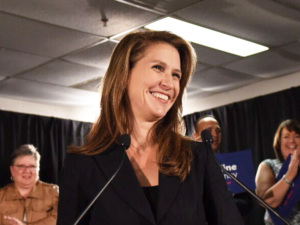 How far from the tree has this apple fallen? Brian Mulroney can’t be happy. He was once proclaimed Canada’s greenest prime minister. And here his own daughter Carolyn Mulroney, as Ontario’s Minister of Transportation, is opening up the province for even more environmentally unsustainable and costly urban sprawl.
It was bad enough that as former provincial attorney general she declared war on the federal government’s carbon tax, widely considered one of the most efficient ways to lower society’s carbon footprint. But now she has begun paving over parts of Ontario’s greenbelt with even more highways.
The new 413 highway would be 59 km long and would take up over 400 acres of the Greenbelt and more than 2,000 acres of Class 1 and Class 2 farmland – among Ontario’s most productive farmland. Impacts include cutting through 85 waterways, damaging 220 wetlands and disrupting the habitats of 10 species-at-risk. And the kicker – it is estimated to cause over 17 million tonnes of greenhouse gas emissions by 2050 resulting in more than $1.4 billion in damages from that pollution.
 Justification for this highway has never been made – is there one? The previous government had convened an expert panel which ended up dismissing the 413 concept on the basis that it would save the average commuter only 30-60 seconds, less than a minute, in commute times. In fact this highway, estimated conservatively at around $10 billion would mostly serve drivers wanting to get up to their cottages. And the government is claiming it’ll also be toll free for them.
Doug Ford has made new highways the centre piece of his campaign for re-election as premier of Ontario. A second highway, the Bradford Bypass, joining highways 400 and 404 and running through the heart of Ontario’s primary market growing land has already started accepting bids for construction.
The province estimates that some drivers could save as much as 35 minutes using this bypass, but again that would largely be people travelling into cottage country. If built, its four lanes would cut through 27 waterways, nearly 11 hectares of sensitive wetlands and the Holland Marsh, a region of the protected Greenbelt nicknamed “Ontario’s vegetable patch” for its fertile soil.
But even as the Premier is planning a new highway, a current high capacity highway, designed specifically for commuters in the GTA’s urban sprawl is sitting nearly empty given its capacity. The contract with highway 407 allows for the company to raise its tolls whenever traffic reaches a pre-determined threshold – something it has done repeatedly. The reverse also applies – that tolls should come down when usage falls.
 How come the toll rates never come down? But for the last two years traffic on the 407 has been considerably below levels to justify the high tolls they are charging. So under its contract, the 407 should have been fined a billion dollars. But the government has given 407 a free pass, a get out of jail card. 407 is not even required to lower the tolls to match traffic volumes. It was like an officer stopping you driving 140 kms in a 40 km school zone and telling you to be careful.
Mr, Ford complains about traffic congestion for daily commuters. Make no mistake, the single best way to reduce that traffic congestion on the 401 would be lower tolls on Hwy 407. Why build another highway way the heck out in farm country that will also sit mostly empty?
So why is the government so determined to build these new roads? Well the Toronto Star and Canada’s National Observer have identified a good reason. Their investigation found over 3,000 acres of prime real estate near the proposed route that is owned by large developers and would be expected to increase dramatically in value. Five of these developers have close ties to Premier Ford’s government including one who was the chair of Transportation Minister Caroline Mulroney’s 2018 PC leadership campaign.
And it only gets juicier when it appears that Minister Mulroney’s office got its hands dirty redirecting the highway Bradford Bypass highway routing away from the second, third and 11th holes of a golf course owned by the father of another Conservative MPP.
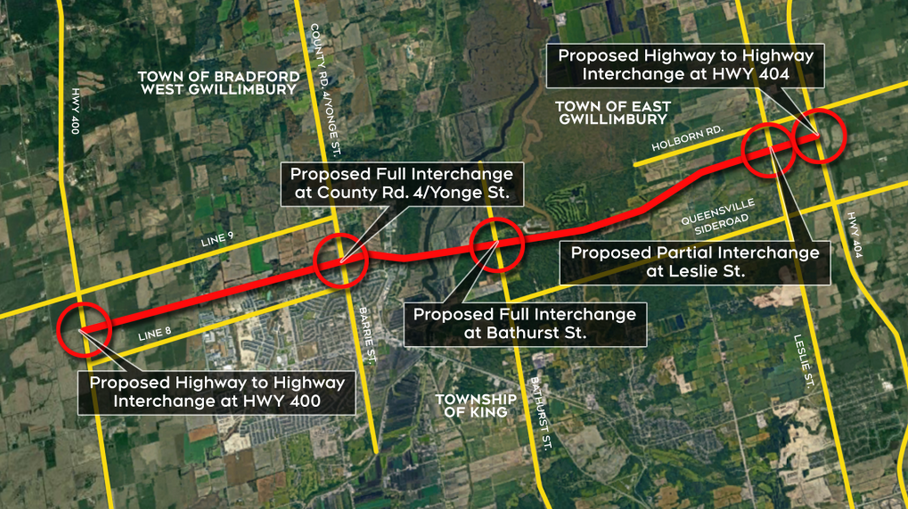 Golf course locations appear to be a determining factor in highway locations. The federal government has claimed that it will intervene with its own environmental assessment (EA) of the Hwy 413, because the Ford government had virtually disassembled and gutted Ontario’s EA process after taking power. The feds have not yet said they will require an EA for the bypass, however, though the current assessment is stale dated, having been undertaken some twenty years ago.
And it’s not just environmental assessments that have been subject to Mr. Ford’s my way or the highway management philosophy. Doug Ford has issued 57 MZOs, more than triple the number that the last Liberal government issued over its 15 years in power. He has expanded his powers three times and has bulldozed his pet developments over the rulings and wishes of local municipalities, the Greenbelt and conservation authorities.
The Auditor-General, Bonnie Lysyk, in a recent report noted that the province is failing to protect wildlife from developers and resource industries, and that the Environment Ministry is “essentially facilitating development rather than protecting species at risk.” Building another highway will just add to the toll of killed and injured wildlife. According to one study, today there are an estimated 14,000 wildlife-vehicle collisions a year – 5 to 10 per cent of all accidents in the province.
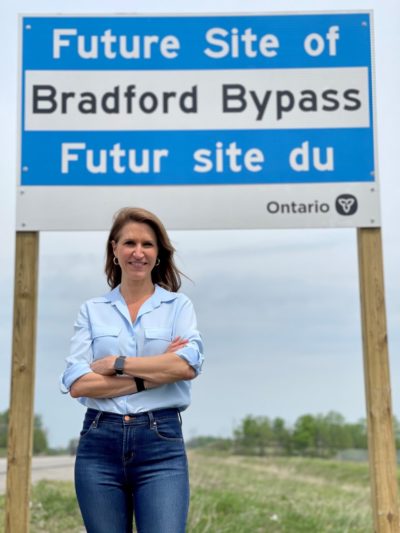 In that part of the world this might be seen as an election sign. When Carolyn Mulroney told the world that she had decided to relocate to Ontario and enter provincial politics there was a sense of optimism in the air. After the dirty tricks the party had engaged in to politically assassinate their former leader, Patrick Brown, a fresh face and mind would be welcome in Ontario’s traditional ruling party.
But that was not to be. While she and her dad may differ on the environment and climate change, they share a passion for political favouritism and its dirty laundry. A two-year inquiry into Brian Mulroney’s dealings with German-Canadian arms lobbyist Karlheinz Schreiber concluded that the former prime minister acted in an “inappropriate” way when he accepted large amounts of cash from Schreiber. According to the judge, Mulroney had “failed to live up to the standard of conduct that he himself adopted in the 1985 ethics code.”
Carolyn Mulroney hasn’t been caught with her hands in the till yet, but her role in building highways to the benefit, primarily, of her development friends and political colleagues doesn’t look good on her. She’ll never be seen as an environmental steward, as her father was, but when it comes to the darker side of politics, it’s what they say – the apple doesn’t fall far from the tree.
 Ray Rivers, a Gazette Contributing Editor, writes regularly applying his more than 25 years as a federal bureaucrat to his thinking. Rivers was once a candidate for provincial office in Burlington. He was the founder of the Burlington citizen committee on sustainability at a time when climate warming was a hotly debated subject. Ray has a post graduate degree in economics that he earned at the University of Ottawa. Tweet @rayzrivers Ray Rivers, a Gazette Contributing Editor, writes regularly applying his more than 25 years as a federal bureaucrat to his thinking. Rivers was once a candidate for provincial office in Burlington. He was the founder of the Burlington citizen committee on sustainability at a time when climate warming was a hotly debated subject. Ray has a post graduate degree in economics that he earned at the University of Ottawa. Tweet @rayzrivers
Background links:
Mulroney Honoured – Hwy 413 – Bradford By-Pass – 407 Free Pass –
Developer Friends – AG’s report – Wildlife and Road Traffic-
Mulroney – a different view –

 By Pepper Parr By Pepper Parr
November 24th, 2021
BURLINGTON, ON
OPINION
Creating the organizational structure needed to run an election – and win – requires a network.
 To the winner go the spoils. Mayor Marianne Meed Ward and her husband Pete were out for dinner with Dianne and Nick Leblovitch at Jakes earlier in the month.
 Was this the first meeting of the Mayor Meed Ward 2022 re-election team? Meed Ward had a solid team during 2018. Pete Ward is a fine strategic thinker and knew what his wife needed in the way of emotional support as well as some sound strategic thinking.
Pete delivered on both levels.
The Leblovics were part of the 2018 team and, based on the information we have, they are the only two who are hold overs from the 2018 election.
That is unusual and has resulted in several noses being out of joint.
Nick Leblovic is a long time political junkie and loves being around people who are close to the seat of government.
Wife Dianne has a well honed political sense that goes all the way back to when Cam Jackson was Mayor.
There was a time when, as publisher of the Gazette, there would be long Saturday morning calls from Nick who was looking for updates, reaction, and as much political gossip as you could feed him.
At the time, Leblovic was the Chair of the Waterfront Advisory committee that ran into a sunset decision which brought a fast close to his career as an Advisory Committee Chair.
When he was told that the committee would cease to exist at the end of the year Nick; said he was blind-sided.
The chummy relationship with Nick came to an end soon after when he sued me and the Gazette for a million – which I didn’t realize I had.
The Libel action didn’t go anywhere. Leblovic chose to be his own lawyer and either lost interest or forgot how to practice law.
Can the Diane Leblovic political savvy, Pete Ward’s strategic ability, and the support Meed Ward has from her tribe result in another win?
Time will tell but get ready for a rough and tumble election. Recall what was done to Meed Ward when she ran in 2018.
Related news stories:
Life of the Waterfront Advisory Committee comes to an end.
Salt with Pepper is the musings, reflections and opinions of the publisher of the Burlington Gazette, an online newspaper that was formed in 2010 and is a member of the National Newsmedia Council.

 By Ray Rivers By Ray Rivers
November 19th, 2021
BURLINGTON, ON
After 26 annual conferences of the parties the world community is no closer to halting or even decreasing global warming. The COP spectacle is one of delegates gathering with false hopes and promises of reducing our global carbon footprint, even as that footprint continues to expand without a foreseeable end. After a quarter of a century of trying to reduce global greenhouse gas emissions (GHG) it may be time to admit that it’s not going to happen without a miracle, and that our’s is indeed a dystopian future.
 The Prime Minister attended – did Canada make an impact? COP has become another one of those events where everyone wants to be – youth, indigenous peoples, disappearing Pacific islanders, government bureaucrats and mandarins, environmental organizations, and even the oil companies. It’s another venue to claim everything and get nothing and a chance to get a grant from the rich countries. These extravaganzas have become little more than an annual reunion for the attendees – see you all same time again next year.
I’ve attended a few of these COP meetings, once representing Pollution Probe back in 1998 and caucusing among the environmental groups. There had been a lot of enthusiasm back then. The Kyoto protocol had just been negotiated and the USA, the world largest historical greenhouse gas emitter, was leading the effort. Bill Clinton and Al Gore had helped craft a Kyoto protocol calling for enforceable emission targets with significant financial penalties for those signatory nations who found themselves out of compliance. It was a significant first step.
But by 2003, when I represented Clean Air Canada as part of the business community, that enthusiasm had been replaced by pessimism. GW Bush added to his legacy as America’s worst president ever, and his violations of human rights, by pulling the US out of Kyoto.
American delegates were seen disrupting the proceedings and the halls of the conference were cluttered with oil company representatives making their pitches that climate change was just another hoax.
 COP26 had more lobbyists taking part than registered delegates. The people who are going to have to live with a climate that is not going to be kind were out in force. Were they heard? Once the Americans scuttled the Kyoto deal there was little appetite for the rest of the world to continue, though Europe and even Canada did for a time. Stephen Harper, whose earlier views on global warming had placed him firmly in the denial camp, pulled Canada out of the treaty once he had gained a majority. And he did this, ironically, just as Canada came close to meeting its Kyoto commitment thanks to Ontario’s phase-out of coal.
COP 26 in Glasgow last week was an almost abject failure on so many counts. Despite pleas for climate action by host Boris Johnson, the world’s leaders have settled for business as usual. And that means greenhouse gas emissions are increasing globally instead of declining and will reach their second highest level this year, despite the pandemic.
Fossil fuels are the main culprit and emissions from burning coal the most egregious insult to our climate. India and China came to the rescue of the nasty coal – refusing to allow the term ‘phase out’ to be used in the final communique. China plans to peak its coal use somewhere around 2030 and India sometime later.
Coal still provides almost 40% of the world’s electricity. Yet 40 nations, including Canada, have committed to entirely phase out coal for electricity by 2030. But China, Japan, India, and the United States, which together account of over 75 percent of global coal use have refused to commit to that goal.
 We continue to fail them – how might they react in the years ahead? Some 20 countries and institutions are promising to end direct international public finance for unabated coal, oil, and gas and to prioritize financing for clean energy by the end of 2022. In addition to international financing, Canada provides the highest subsidies for fossil fuel development among all G7 nations. A group calling itself the ‘Beyond Oil and Gas Alliance’ (BOGA) including Costa Rica, Denmark, France, Greenland, Ireland, Sweden, Wales, and the Canadian province (nation) of Quebec committed to taking “concrete steps” to reduce oil and gas extraction.
Perhaps the biggest sign of failure was when the US and China (whose leader hadn’t even bothered attending), announced that they would take the conversation on emission reduction off-line. Gas lighting, double speak, or just an excuse to get out of the room, that bilateral approach is unlikely to amount to anything. China and the USA have to get over unfair trade practices, industrial espionage and Taiwan before they could have a civil discussion on climate change. And China, with the second largest global economy still maintains the façade of calling itself an undeveloped nation.
COP 26 wasn’t a complete waste of time, there were locally sourced ‘sustainable’ sandwiches for the delegates, despite the three hour hybrid/gas guzzler delivery drive from Aberdeen. But this COP will not help the planet keep its temperature rising beyond what scientists have identified as the critical 1.5 degree C temperature increase over the pre-industrial period.
Global net GHG emissions from human activity would have to decline by about 45% from 2010 levels to 2030 in order for us to meet that goal.
Canada’s new climate plan comes close to that goal, but after all, it’s just another plan. This year’s heat dome and the river of rain climate-bomb, which knocked British Columbians into climate reality, occurred when the global temperature was only 1.1 degree C above pre-industrial levels. And the science community tells us that these kinds of climatic effects will only get worse – Ontario may be next.
If not COP, then what can we do? Concerned individuals could always help by consuming less red meat; making their next car an EV (electric vehicle) and converting their appliances to electricity, but the heavy lifting has to come from governments with their regulatory powers.
For example the federal government has committed to banning the sale of new gasoline powered automobiles by 2035, it has mandated the carbon tax, provides incentives to buy an EV, promised new caps on gas emissions and the phase out of coal for electricity by at least 2030. The previous Ontario government phased-out coal and started a program of renewable energy.
The world’s leaders once hoped that the Montreal Protocol, which saw a mostly successful cooperative global effort to eliminate ozone depleting substances, would serve as a model for action on global warming. They created the IPCC (international Panel on Climate Change) which has done a truly amazing job identifying the crisis and what we need to do about it. But none of that matters if the political leaders at those COPs won’t step up and do the right things for the sake of humanity.
 Coal is used to generate whatever it is the facility produces. Some politicians have mused that it may be time to reform global trade rules in favour of protecting the planet’s climate. I recall having a conversation with US officials, back in 1997, who were proposing tariffs on imports from nations with lower environmental standards than the US – sort of levelling the playing field. Conservative leader Erin O’Toole seemed to want to open the door to that kind of thing in his last election platform.
A massive boycott of Chinese-manufactured exports, for example, might help bring President Xi to his senses. We simply can’t wait till 2030 to begin phasing out coal. If the diplomacy of COP doesn’t work, then maybe it is time for a more forceful approach.
Political journalist Rex Murphy, who is as close to a climate change denier as they come, suggested in a tongue-in-cheek opinion piece that maybe it’s time for net zero COP meetings. In fact, looking at the failure of the COP process to reduce, let alone stabilize our carbon footprint, he may have a point.
 Ray Rivers, a Gazette Contributing Editor, writes regularly applying his more than 25 years as a federal bureaucrat to his thinking. Rivers was once a candidate for provincial office in Burlington. He was the founder of the Burlington citizen committee on sustainability at a time when climate warming was a hotly debated subject. Ray has a post graduate degree in economics that he earned at the University of Ottawa. Tweet @rayzrivers Ray Rivers, a Gazette Contributing Editor, writes regularly applying his more than 25 years as a federal bureaucrat to his thinking. Rivers was once a candidate for provincial office in Burlington. He was the founder of the Burlington citizen committee on sustainability at a time when climate warming was a hotly debated subject. Ray has a post graduate degree in economics that he earned at the University of Ottawa. Tweet @rayzrivers
Background links:
What is COP – Greta Has Spoken – COP 26 Text –
Harper’s Climate Denying History – Ford Lower Gas Prices –
Rex Murphy –

 By Pepper Parr By Pepper Parr
November 17th, 2021
BURLINGTON, ON
OPINION
We now know a little bit more about the developments that have been grandfathered by the Minister of Municipal Affairs and will proceed through the Ontario Land Tribunal process. If past appeals are any example, they will be approved at that level.
Five years from now Burlington will be a much different city.
A closer look at what has been grandfathered and what they want to build is now possible even though city hall and the Office of the Mayor haven’t had much to say.
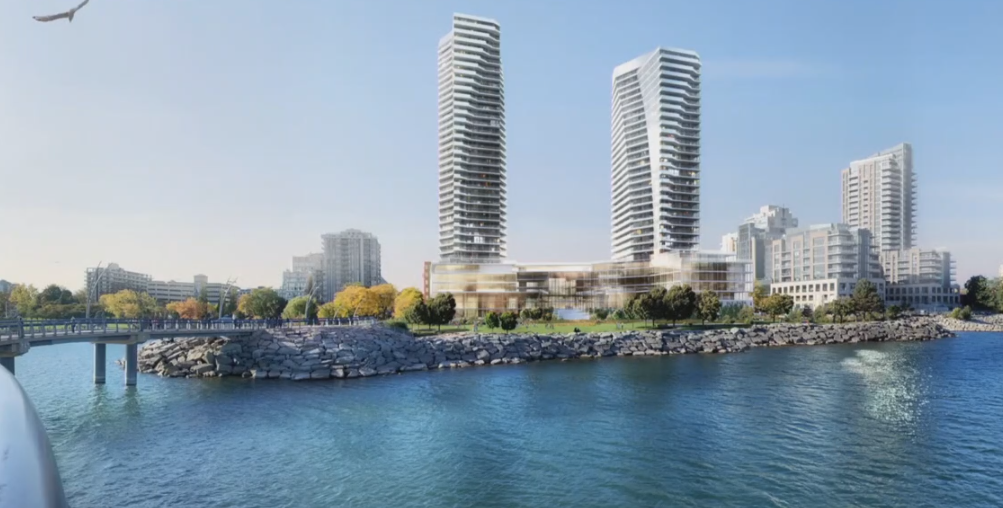 It is a different skyline. The degree to which it will change the small, local feel that many people have of Burlington is something that will work itself out if these two towers go up. The Waterfront Hotel site, even though not yet at the application stage has been grandfathered.
The Core Development that runs from one side of the football to the other – from Lakeshore Road on the north to Old Lakeshore Road on the south has been grandfathered.
The development planned for the eastern end of the football, one of the Carriage Gate developments has also been grandfathered.
 This is the structure that will sit right next to Joe Dogs. How that hospitality operation will operate is something that they are certainly thinking really hard about. The development that would be next to Joe Dogs on Brant street – put forward as a 30 storey building has been grandfather as has 407 Martha – a building that is very close to Rambo Creek where part of the retaining wall has been described as not all that safe.
2085 Pine, a property that has changed hands a number of times and been before council with different suggestions on just how much height there could be and at the same time preserve a heritage building at the front of the property – that, too, is at the OLT.
The land between Old Lakeshore Road and Lakeshore Road, known as the football because of its shape was at one time described by former Toronto Mayor David Crombie as a jewel we should not let get away on us.
It became a jewel that developers realized needed a bit of polishing up and then sold off as a very desirable high end property that would never have a building put up between it and the lake.
Somewhere in the last ten years the city was never able to come up with a plan that would secure that land and make it more public space.
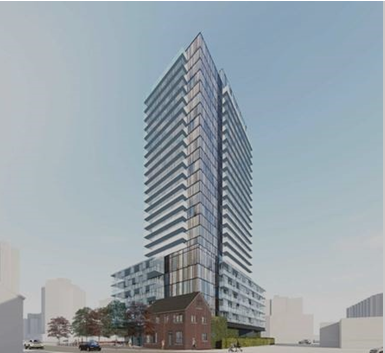 The CORE Development takes up all the land between Old Lakeshore Road and Lakeshore Road in the centre of the football area. The plan is to keep the popular but expensive restaurant that has been on the site for a long time. 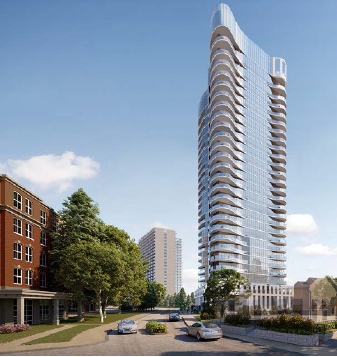 The Carriage Gate people see this development as the eastern gateway into the city. Old Lakeshore Road is to the left with Lakeshore Road to the right. With the grandfathering in place all the planners are left with is the south side of Old Lakeshore Road: Top of bank rules limit what can be done on that land. The heritage designation Emma’s Back Porch has, will limit what can be done with that property.
Once we are out of the pandemic we can expect someone to lease Emma’s and get it back into operation. Not sure how pleasant a local it will be with all the construction that will be taking place.
 The triangle shaped property will be where Carriage Gate puts up their 25+ tower – they see it as the eastern gateway to the city. The property to the immediate left is where the CORE development will be built. To the left of that is parking across from Emma’s Back Porch which is owned by 2084 Lakeshore Holdings Ltd. They also own the small parking lot to the east of Emma’s. On the western tip of the football the property is owned by a trust – we’ve yet to learn who the beneficiary is of that trust. What does all this leave the city with? Is there nothing more in the way of options?
The pandemic has changed the way citizens can communicate with the elected leadership and that elected leadership hasn’t done all that much to find ways to hear what citizens have to say.
The Office of the Mayor has seen this as an opportunity to put her spin on what has taken place.
Salt with Pepper is the musings, reflections and opinions of the publisher of the Burlington Gazette, an online newspaper that was formed in 2010 and is a member of the National Newsmedia Council.

 By Pepper Parr By Pepper Parr
November 13th, 2021
BURLINGTON, ON
OPINION
In the world of politics – getting the right people in the right room at the right time is an art.
Our Mayor may have missed some of those art classes.
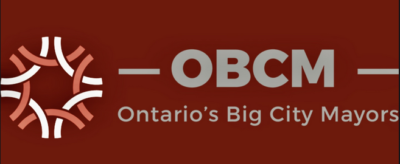 Mayor Meed Ward invited all the members of the OBCM – Ontario Big City Mayors to hold their October 15th meeting in Burlington at the Pearle Hotel and Spa. Mayor Meed Ward invited all the members of the OBCM – Ontario Big City Mayors to hold their October 15th meeting in Burlington at the Pearle Hotel and Spa.
The Gazette didn’t have a lot of information on how that meeting was put together. Neither the Mayor or her staff talk to us. We’ve not been BFF for sometime. But that is another story that will unfold in the fullness of time.
All we knew was that there was a lot for the Mayor to brag about – the locale of the Pearle and its stunning grand stairway and the wide open space overlooking the lake and the Pier would be the envy of any Mayor.
Parts of the meeting were held via Zoom.
Mayor Meed Ward has needed a one-on-one conversation with Steve Clarke, the Minister of Municipal Affairs and Housing for some time. The OBCM event was a perfect opportunity.
The Minister is reported to have said publicly on June 15th of this year that he was on for having the Urban Growth Boundary moved from the location that was agreed upon by the 2014-2018 City Council to something further north and closer to the Burlington GO station.
Meed Ward argued strenuously during the 2018 election that the boundary should have been much closer to the Burlington GO Station to begin with.
Once she was elected as Mayor the first thing she did was fire the City Manager and then began the process of revising the city’s Official Plan that had the Urban Growth Centre moved north.
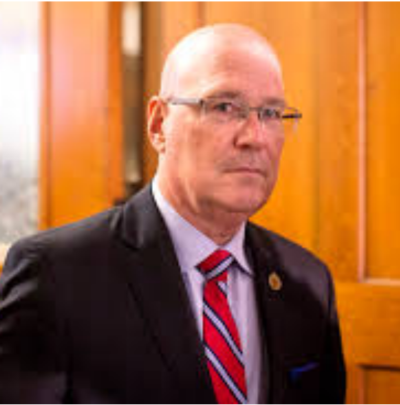 Minister of Municipal Affairs Steve Clarke: Mayor hasn’t been able to connect with the Minister – maybe the Minister doesn’t want to talk to her. One of the problems was that there were a number of significant developments that were banking on being part of the UGC – should that be moved they would lose part of their development argument.
All that was needed to make the City and Regional decisions real was the signature from Minister Clarke.
But that signature wasn’t forth coming.
The press conference at which the Minister is reported to have said he was on side for moving the boundary was seriously questioned by a member of the Ontario Land Tribunal who would not accept it into evidence.
One would have thought that a political operative of Meed Ward’s stature would have found a way to set up a one-on-one with Minister Clarke. The OBCM event taking place in Burlington with the group meeting at the spanking new Pearle Hotel and Spa (it is understood that some of the Mayors taking part stayed over at the Hotel) was a perfect place for a conversation.
Having Minister Clarke taking part in the meetings was a natural thing for him to do. He is the Minister of Municipal Affairs and all the biggie municipal Mayors were either attending personally or taking part via Zoom.
But Minister Steve Clarke did not make it to the city on October 15th.
One has to wonder – why a connection wasn’t made. Is Burlington too small for the Minster to pay attention to or is the Mayor just too small a fish for the Minister to make time for?
Or did the Minister realize that there were serious problems with his Ministry and the City and it was better to step around that one. His political advisers would have advised him on that one.
The public is in the dark on just what is going to happen next. Other than blowing off some steam the Mayor didn’t really say all that much. “This is a devastating and shocking decision imposed on our community, which completely disregards the vision of residents, council and staff for this area.
She might have been a little contrite and admit that she really blew this one.
She did add that “Council will be examining all of our options for a review of this OLT decision.
 Transparency was a big word when she was a candidate – it didn’t make it into her bag of tricks when she was elected Mayor. How come? Mayor Meed Ward speaks frequently about her experience as a journalist. This would be a good time for her to make herself available to media and be both transparent and accountable and lay all the facts on the table.
Mayor Meed Ward gets in front of the Cogeco cameras as well as the CHCH cameras on a regular basis. They are seen by the Mayor as friendly folk – not the kind of people who ask her tough questions.
Ahmed Hussen, Federal Minister for Housing and Diversity was able to attend Ontario Big City Mayors event.
Why not Minister Clarke?
Related news stories:
The Minister is reputed to have said something about the UGC but there doesn’t appear to be anything in writing
Salt with Pepper is the musings, reflections and opinions of the publisher of the Burlington Gazette, an online newspaper that was formed in 2010 and is a member of the National Newsmedia Council.

 By Pepper Parr By Pepper Parr
November 11th, 2021
BURLINGTON, ON
 Later today Burlingtonians will watch a live streamed video of the Remembrance Day service and remember the fallen and those who served in the wars we have fought – all in the name of the democracy we cherish but don’t always observe or respect. Later today Burlingtonians will watch a live streamed video of the Remembrance Day service and remember the fallen and those who served in the wars we have fought – all in the name of the democracy we cherish but don’t always observe or respect.
The bugles will sound out the Last Post. Reveille will be played and the troops march away. We leave the Cenotaph in a reflective mood.
In a play Trevor Copp wrote a number of years ago, there was a scene in which two soldiers were talking about the things they had done when they were in the trenches during WW1.
The experienced was horrific for both and horrific for the men who were there in 1917. There are very few of those WW1 veterans left – those that are salute at a Cenotaph on Remembrance Day. The lines on their faces and the look in their eyes tell much of the story.
The script drills down:

YOUNG HERMAN:
Then on to the next trench. The next. They kept us going for miles. It worked again and again. We were taking ground that had been held for months. Turning the tide for the whole region. No bullets; we just used the bayonets over and over. But sometimes they would stick in the ribs, then the man you’d just run through would wrap his arms around you. Hold you in, like he wanted to pray with you, you had to pry them off. It took too long. We were almost all the way through; but the light was breaking and we were getting too slow.
Then one of ours dropped his bayonet and picked up a shovel for digging trench. They were heavy and sharp. At the next trench he wheeled it back and cut one of them in half. One swing.
It looked quicker.
It didn’t stick. Everyone dropped the guns and took shovels.
I found a muddy one in the next field.
It looked quicker.
LEO:
I understand Herman.
YOUNG HERMAN:
We reached the last trench just at first light.
It was faster.
I used a shovel Leo.
God forgive me, I did it with a shovel.
War will become obsolete when it is socially unacceptable

 By Pepper Parr By Pepper Parr
November 8th, 2021
BURLINGTON, ON
OPINION
A reader sent in the following: It was in regard to the Heritage Advisory Committee and the recommendations it makes.
Sad to see the usual suspects piling on in this case.
As a person who has served on a number of voluntary community boards, I can only ask: would you not expect and welcome people with an interest in art to be on an art gallery board?
Or people with attachment to gathering artifacts to join a museum board? I could go on.
All governments depend on usually unpaid citizen groups to perform such roles, since the alternative is inexpert and uncommitted paid staff.
So it’s a win-win, as long as conflict of interest principles are well defined and managed, which seems to be the case here. Searches for absolute purity after the fact by self-appointed nitpickers will only discourage others from sharing their expertise.
The piling on is part of the way some people choose to express themselves. It happens.
Here is where I think the problem exists. It is my firm view that when people choose to serve they are there to serve the public not themselves.
And that, in my opinion is what has happened.
The people who serve on a heritage committee are advocates for protecting as much heritage as possible.
The people who are passionate about heritage tend to share a mind set: Alan Harrington is fierce when it comes to fighting for the preservation of our history. Rick Wilson brought to light a more complete story about the Burlington Races, a name used to tell part of the War of 1812 story. His efforts resulted in a plaque being erected, and hopefully in the fullness of time, a plaque being corrected.
It would be difficult for these two men, for whom I have the greatest of respect, to not recommend a grant for a house that is a superb example of what the city wants to ensure isn’t replaced by some ugly monster house.
What the Heritage Advisory Committee does not have is a clear set of guidelines or rules that prevent self serving.
The practice in Burlington is to have a member of Council sitting on each Advisory Committee: one would hope that Councillor would have a deeper understanding of what good governance is all about and explain it to the Committee members.
 This is what you don’t want happening at any level of city business. The thing you don’t want is a situation where there is a lot of wink, wink; nod, nod taking place when decisions are being made. That is not the case with the Barker recommendations.
That kind of behaviour is the first step to the slippery slope that lets corruption take place.
It is not about “absolute purity after the fact by self-appointed nitpickers.” It is about consistent good governance.
It is not enough to be on the right side of the rules; it is the spirit of the rules that matters.
It is clear to me that the rules need some tightening up. What perplexes me is that Council chose to let it pass. Staff advised the city that a previous grant had been given – that should have raised a red flag.
I recall a discussion taking place at Council when James Ridge was the City Manager and they were discussing what a Council member could accept in the way of a gift or a benefit. Ridge at the time said all you had to do was document everything: if someone else paid for your coffee, note it. At the time we had a member of council who saw someone one else paying for a golf game or a ticket to an event as quite acceptable. It wasn’t and it isn’t.
The rules need to be tightened.
Related news story:
An example of what strong advocacy can do.
Salt with Pepper is the musings, reflections and opinions of the publisher of the Burlington Gazette, an online newspaper that was formed in 2010 and is a member of the National Newsmedia Council.

 By Pepper Parr By Pepper Parr
November 6th, 2021
BURLINGTON, ON
The message asked: “Please don’t use my name because I have friends at all these institutions and look forward to going back to them one day.”
The request had to do with a piece we published on the services the city provides and what the delivery cost is. Our reader writes:
Unfortunately, I have been unable to use any of their fine services or enter their buildings for a year and a half.
However – all these institutions have been CLOSED SHUT or severely reduced in their operations for the past 20 months.
1) If they provide no service – why do they cost so much?
2) If we can survive without them – is there a way to do them for less?
3) I think each of them have a very strong volunteer support staff in place – so it isn’t staffing costs?
and if it WAS staff – then why were people not laid off and put on the CERB (or whatever is the right thing to do).
And the charts should show what each group earns (takes in) as revenue. This of course is during non-covid times.
Like …
 Riders cover the costs – if not don’t operate a transit service Parking, Transit, cemeteries should be self funded. Court services should be self supporting through fines they issue.
If we earn $100 from parking fees but spend $125 to collect it? Wouldn’t it be wiser to make parking free – or charge 25% for parking?
If these groups are not self sufficient – that falls on the management for that group to figure out how to make it work.
 Also as far as “dipping into reserves for a rainy day” 😮 – we have suffered 500 COVID rainy days running now. Also as far as “dipping into reserves for a rainy day” 😮 – we have suffered 500 COVID rainy days running now.
This is the worst crisis since WWII. This IS the rainy day. 🌧🌂☔
It isn’t easy doing up a budget. Especially for government services at union dollar rates.
I am very happy with the things in our beautiful city of Burlington and hate to see services and amenities taken away.
When they started charging for parking to go to the waterfront – I just stopped going to the waterfront.
I say let the people in other towns (who pay lower taxes and therefore have more money to spend) come and pay for parking here and fund our revenue stream.
The story that resulted in the comment

 By Pepper Parr By Pepper Parr
November 2nd, 2021
BURLINGTON, ON
Taxes are about politics – good government service comes after that.
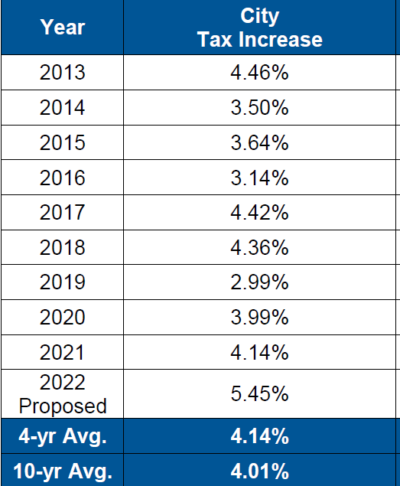 The four year average amounts to 4.14% – nothing to brag about but with inflation hitting that level – might it be acceptable? You get elected when you lower taxes and fake the delivering of service as best you can.
Burlington changed the way and frequency that it collects leaves and then citizens fight like crazy with those who want to cut down the trees so they don’t have to rake them up or they want to put in a swimming pool.
In the fourth year of a term of office the practice is to lower taxes just enough to show that you care and add a service or two that doesn’t cost all that much,
Some will argue that COVID19 changed those practices.
When the public sees just how much money the city got from the federal and provincial governments they will wonder why taxes are predicted to increase by 5.45% over last year.
The four year tax run for the current council is not encouraging. Is this a tax and spend government?
Too early to tell.
 Sharman will experience some indigestion … Mayor in waiting Paul Sharman will tell you, even if you don’t ask, that during his first year as a member of Council he pushed for a 0% increase – and got it.
Sharman will experience some indigestion over the Mayor in Waiting title; he’s not modest – just strategic.
How the rest of council are going to explain the increase will be interesting to watch.
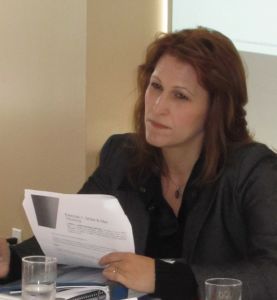 Mayor Marianne Meed Ward. was seen as unbeatable when she ran for Mayor the first time – has the music changed? Will a budget be her undoing? The Mayor has already staked out her position – the budget they will be looking at on Wednesday is a “staff wish list” – that’s what the Mayor is reported to have said during her CMHL 15 minutes of fame bit last week.
During this four-year period, the city’s budget included the 1.25% infrastructure levy to direct towards the growing infrastructure funding gap while at the same time provided significant investments in Transit, By-law Enforcement and Forestry.
Add to the mix interest former Mayor Rick Goldring has shown in matters civic. This could be very interesting.

 By Ray Rivers By Ray Rivers
October 28th, 2021
BURLINGTON, ON
OPINION
Jason Kenny asked Albertans whether they think Canada’s regional equalization program should continue to exist. He did this through a divisive referendum no less sneaky than Quebec’s René Lévesque had crafted when he mislabelled his plan for independence ‘sovereignty association’.
Kenny admitted the referendum was purely a political ploy, since even after the public responded as he had wanted them to (62%), Alberta has no authority to change the equalization program. Equalization is entrenched in Canada’s constitution and administered by the federal government.
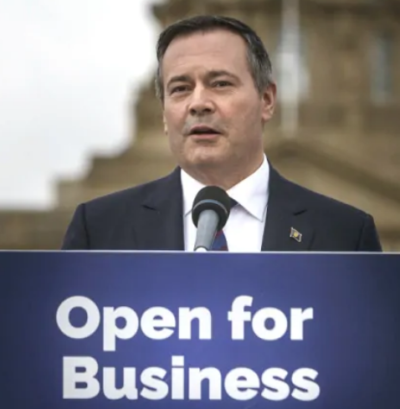 Jason Kenny: Will he be the Premier come the next election? Of course this is all partisan theatrics. Mr. Kenny had been an influential senior minister in the Harper government. Why didn’t he lobby his party leader for change when he was actually in a position to do so.? And Kenny is alone, no other province shares his zeal to remove this pan-national program that has helped to glue the country together for more than half a decade.
Kenny complains that Albertans pay 15 billion dollars a year more in income and other taxes to the federal government than the province receives back from the feds. Of that amount Kenny tells us that $3 billion gets allocated towards the 20 billion dollar equalization fund, which the federal government administers based on the program’s eligibility criterion.
But Mr. Kenny has somehow forgotten that Ottawa has been subsidizing the fossil fuel industry for over forty years, most of it centered in Alberta, and much of it to expand oil sands operations. Some of the subsidies are direct payments for technology and infrastructure. Some are tax credits, wage subsidies and write offs of one form or another. And some are required to clean up the mess, the myriad of environmental legacies of orphan wells and tailing ponds.
The feds dole out somewhere between 3 and 18 billion dollars, depending on who you ask. So by any measure Alberta has been doing pretty well from that pig trough they like to call federal government. Kenny may not be receiving equalization payments, because as the wealthiest jurisdiction in the country Alberta is not eligible, but Alberta’s corporate interests have certainly been well fed by Ottawa.
That has to change if Canada is to meet its bold greenhouse gas (GHG) reduction targets of 40-45% by 2030 and net zero by 2050. Coal, oil and gas have to be phased out and shut down for any of that to happen, since those are the major sources of GHG in the country. And make no mistake Canada, being one of the worst global polluters has committed to this.
So, having recently renewed his mandate with an almost majority of seat in Parliament the PM has decided on action ahead of rhetoric. Former Quebec Greenpeace activist, Steven Gilbeault, who had once been arrested for scaling the CN Tower, is Canada’s newest Environment Minister. And the first order of business at the upcoming COP 26 Climate Change conference will be to announce that Canada will eliminate all subsidies to the fossil fuel sector by 2023, actually 2 years ahead of most other nations.
 Steven Gilbeault, the man on the right is now the Minister of the Environment This is not the first time we’ve seen that kind of promise. Mr. Trudeau said he’d do that back when he ran in 2015…. but he didn’t. In fact he ended up buying an oil pipeline for Alberta instead. And it’s not just the Liberals who can’t seen to cut the cash flow, because Mr. Harper also promised to end the subsidies way back in 2009… but he didn’t either.
Shutting off the subsidy taps sounds easy but it’s really pretty complicated. For one thing there is the regional political situation. Still Canadians have clearly demonstrated over the last two elections that they want to see action on climate change. And even voting Albertans and the petroleum sector are coming to that position.
Oil and gas contributes less than 10% to the country’s GDP. But that sector is a critical source of income and employment for at least four provinces. And most of us still drive gasoline powered cars and rely on fossil fuelled transportation for our goods and services. So phasing out will require substantial adjustment and retraining.
And not everyone agrees on the definition of a subsidy. In 2019 the Prime Minister requested his then-finance minister Bill Morneau to prepare a list of Canada’s fossil fuel financial supports. By March 2021 that report was still “a work in progress”. But they know where the low hanging subsidy fruit lies.
Subsidies, serve to lower the price of a commodity, since governments pick up some of the costs of production. That is the exact opposite of what the national carbon tax is all about. Why would we charge consumers more at the pump, for gasoline, and then help the oil companies reduce their costs and thus prices? The last federal budget projected $18 billion spending over the next 5 years on climate actions. Yet we gave the oil and gas sector as much as $18 B last year in subsidies.
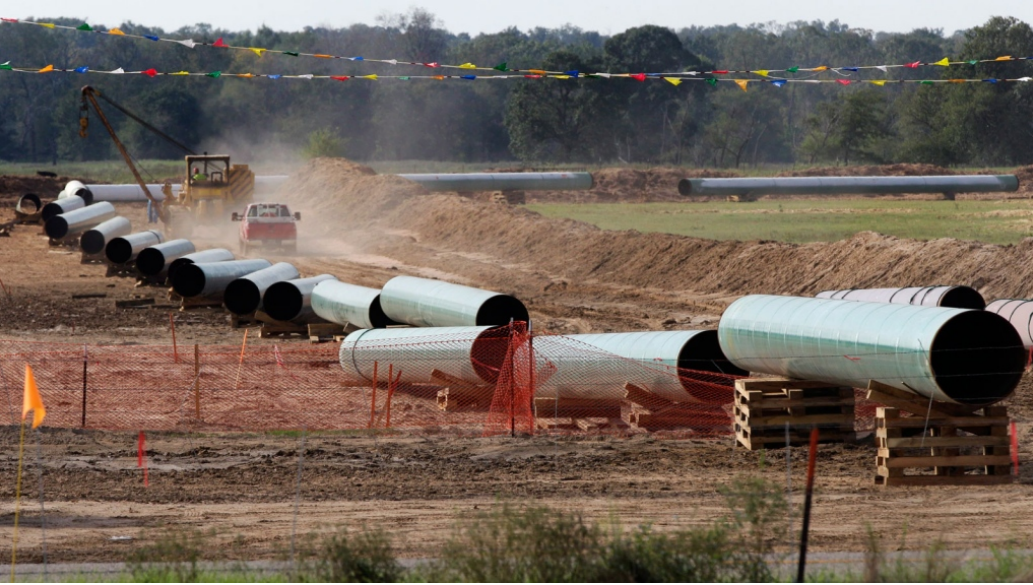 The Prime Minister bought the pipeline to show the people of Alberta that he cared. Mr. Trudeau purchased the Trans Mountain pipeline against his better judgement to show Alberta some love. But he got no thanks in return. By appointing long time climate activist Steven Gilbeault as Canada’s new environment minister, he is sending Mr. Kenny a message. No more Mr. Nice Guy. The Empire is striking back – Canada will be turning off its carbon rich taps, starting with the money that feeds the fossil fuel industry.
As for the troublesome Mr. Kenny, the most unpopular premier in Canada, one can only hope the voters in Alberta look long and hard at just what an asset he is for them and the province’s longer term economic health. It is time to embrace the future.
 Ray Rivers, a Gazette Contributing Editor, writes regularly applying his more than 25 years as a federal bureaucrat to his thinking. Rivers was once a candidate for provincial office in Burlington. He was the founder of the Burlington citizen committee on sustainability at a time when climate warming was a hotly debated subject. Ray has a post graduate degree in economics that he earned at the University of Ottawa. Tweet @rayzrivers Ray Rivers, a Gazette Contributing Editor, writes regularly applying his more than 25 years as a federal bureaucrat to his thinking. Rivers was once a candidate for provincial office in Burlington. He was the founder of the Burlington citizen committee on sustainability at a time when climate warming was a hotly debated subject. Ray has a post graduate degree in economics that he earned at the University of Ottawa. Tweet @rayzrivers
Trudeau’s – the Alberta Memo – Alberta’s Claim – $18 Billion Subsidy –
Canada’s Carbon Tax – Environment Minister –

 By Pepper Parr By Pepper Parr
October 25th, 2021
BURLINGTON, ON
The cat is out of the bag.
 Ouch! Financial people are expected to put forward a budget asking for a 5.45% increase over last year.
That didn’t come as a big surprise.
In the media release from city hall they explained that “This represents a 5.45% increase to the City’s portion of the tax bill.”
The statement is totally true.
 In the beginning she was all about transparency and accountability. Something changed. The media release also said: “When combined with the estimated regional and education tax levies, the overall projected tax increase for a Burlington homeowner in 2022 is 3.18% or $24.76 per $100,000 of assessment. For example, homeowners with a home assessed at $500,000 would pay an additional $123.80 per year or $2.38 per week.
That statement is totally true as well. The point that never gets made is this: The city collects taxes for the education sector and the Regional government but has absolutely no impact on the amount taxes levied by the Boards of Education and a minimal impact on the Regional taxes levied. Burlington has just 7 of the 24 votes at the Regional level.
The combined tax level tends to make the Burlington 5.45 % look better, the reality is that the city is taxing its citizens at a level well above inflation. Two percent increases are not going to be seen for a long time.
 Citizens looking over a budget document that they have next to no chance of changing. Better that they be given a piece of cake. As for the public having any impact – the numbers are all but cast in stone well before the public gets to see them. For Mayor Meed Ward to say she wants the public to “ assist City Council in the budget process” and “to share their input and tell us what services are important to them.”
To what end? Adding insult to injury this Mayor does not appear to be doing anything to find ways to let tax payers meet in a live setting and express their views. She would rather have you “join in the conversation at the November 22 virtual town hall that she will be hosting.
Salt with Pepper is the musings, reflections and opinions of the publisher of the Burlington Gazette, an online newspaper that was formed in 2010 and is a member of the National Newsmedia Council.

 By Pepper Parr By Pepper Parr
October 20th, 2021
BURLINGTON, ON
To get some sense as to where your ship is going – you want to know something about the person at the wheel and the decisions they make.
Same rule applies to the Mayor of Burlington.
There have been some very good decisions. The decision to have the Urban Growth Centre moved north was a good decision.
 A smart lawyer and a planning department that didn’t understand just what the concept of Mobility Hubs (now called MTSA’s) was all about. The Mayor was dead on about the bus station that was declared a Major Transit Service Area – as soon as she had all the information she saw the obvious.
The disturbing part of that was that the council that served from 2010 to 2018 neither knew or weren’t told by the planning department that the designation given that bus station was an error. Instead they left it in place and the result is the 26 storey Nautique that is now under construction.
Someone in Planning should be wearing that one.
Meed Ward understood the mood of the electorate and chose limiting development and making sure that the development that was coming was the right kind in the right place.
She basically chased the developers out of the downtown core.
Admittedly there are a number (about four with several pieces of land within the football that have not been dealt with) of development along Lakeshore Road and within the football that are a problem.
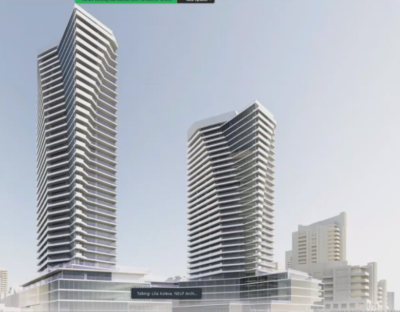 Mayor Meed Ward does not appear to be ready to take a position on the re-development of the Waterfront Hotel site. Is this one of those “right things in the right place”? And of course there is the Waterfront Hotel development that could take the growth of the city as we know it today in a much different direction.
Perhaps it is time to think in terms of how Burlington could adapt to the change and make it work for them. We don’t see the city planning department getting in front of issues and being proactive.
The decisions in front of the Mayor now that are a concern are:
The Holiday market, which is now a done deal that got through Council under the shadiest of circumstances;
The park within the Molinaro development at Brant & Ghent;
The Waterfront Hotel site and the redevelopment of that property; and
her enthusiasm for the Holiday market scheduled for December 9th to 12. The Mayor buys into the claim that 1000 people will take part. What that market will do to the merchants in the downtown core who are struggling to stay above water is something they Mayor doesn’t seem prepared to take into account.
Very recently the Molinaro Group took part in a Statutory meeting in which they revealed their plans for a half acre park that would be created at the east end of the development at Brant and Ghent.
 Traffic for the towers on either side of Brant would exit and enter via Ghent. The half acre park is shown on the far right. Title to the land would be registered with the Condominium Corporation . The plan was to create the park, then turn it over to the condominium corporation that would eventually be set up to represent the interests of the condominium unit owners.
The idea that the unit owners will go along with their owning and maintaining a park that would be open to the public is a real stretch.
Anyone who has served on a condominium board would tell you that this is one of the craziest things they have ever heard of.
 This is described as a half acre part which was described as bringing some of Spencer Smith Park north The Mayor seems to think that the city would get another park at no cost and residents of a condominium will cover the costs of keeping it operational.
 Renderings on what a park could look like. Will the information about the park for which unit buyers will have to be clearly set out in the sales literature? Will it be clearly set out in the condominium agreement – those things run to several hundred pages which only the lawyers read.
The Mayor does not appear to have taken a position on the proposed redevelopment of the Waterfront Hotel site. One has to ask: Where is the claim that this Mayor wants the right development in the right place ?
 There was a time when Meed Ward was all about Truth to Power – now that she has the power Truth seems to have been mislaid. Growing from a really ballsy ward councillor who brought about some significant changes to the way the city operates, we appear to have a Mayor who has lost the wind she used to have in her sails.
She has pulled together a large part of her re-election team and she is in campaign mode.
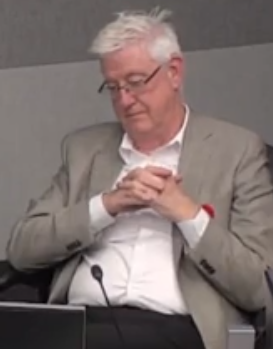 Ward 5 Councillor Paul Sharman – considering his options? And at this point there doesn’t appear to be anyone willing to run against her – except for Councillor Sharman who is probably considering his option.
Go for it Paul!
Salt with Pepper is the musings, reflections and opinions of the publisher of the Burlington Gazette, an online newspaper that was formed in 2010 and is a member of the National Newsmedia Council.

 By Staff By Staff
October 18th, 2021
BURLINGTON, ON
Burlington has embarked on a huge city building project.
When completed the city will have three distinct neighbourhoods; the eastern part of the city will have a new neighbourhood centered on the Aldershot GO station.
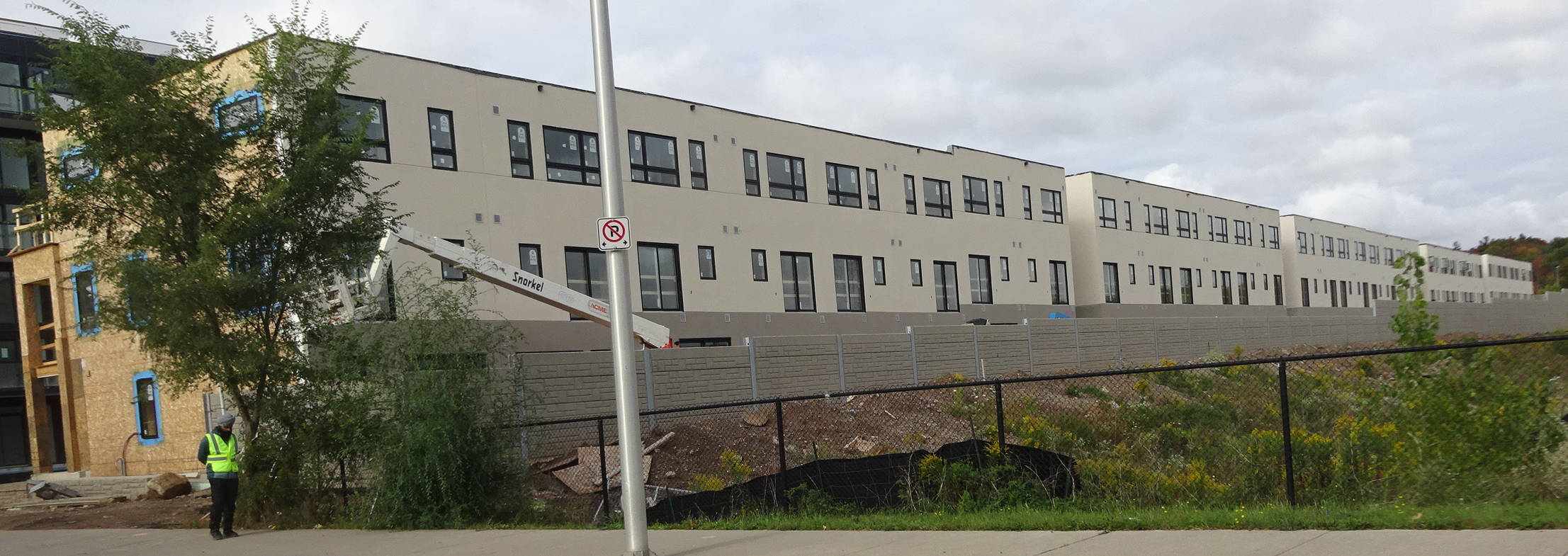 This is the western boundary of the Station West Development built by the ADI Group. A significant part of the community building has already taken place in Aldershot. The Station West development by the Adi Group is well underway with three more towers to be built on the south west corner of the property that edges onto Masonry Road.
The other two new neighbourhoods will be centered on the Burlington and Appleby GO stations.
The city Planning Department is now working to get feedback from the people who will be impacted by these very significant changes.
A public meeting was held to explain what is planned. To get feedback from the public the Planners have devised a WORKBOOK that they say will take 30 to 45 minutes to complete.
Completing the WORKBOOK is voluntary and the information people provide is confidential (even to city staff).
The Planners recommend you complete the workbook on a laptop, tablet or PC to view the images in a larger format and keep a copy of the Preliminary Preferred Precinct Plan open in another tab or browser window to assist you in answering the questions and as a point of reference.
The link to the WORKBOOK is HERE. It is a little complicated. Just scroll through the pages, click on the images and then return to the page. There is enough instruction to get you through it.
The workbook is available in other languages. To request, e-mail getinvolved@burlington.ca. You may also use the “Select Language” translate button found on the project page to translate both the page and workbook.
An MTSA (Major Transit Service Area) is the area within 500 to 800-metres of a higher order transit station (these are the three GO stations) that are expected to be about a 10-minute walk from the GO station.
These are seen as the three most critical locations within the urban area expected to accommodate the majority of the City’s forecasted growth to 2031 and beyond.
Through the preparation of the new Official Plan, new policies were developed to guide development and change in the Downtown and Uptown (at Appleby Line and Upper Middle Road). The MTSAs are now the remaining priority locations for which detailed planning must be completed to establish the vision for growth, to guide development, investments in transit, infrastructure and public service facilities, including parks, and to support significant future population and employment growth.
To some this project may feel familiar. From 2017 to 2019 the City worked on developing area-specific plans (ASPs) for the three GO Station areas, then called the Mobility Hubs Study. The MTSA ASP project will build upon, and advance, the work done through the Mobility Hubs Study.
The objective of this project is to plan to accommodate new residents and jobs by setting a vision for three unique, complete communities that are centered around the City’s three GO Stations along the Lakeshore West rail line. These communities will be environmentally friendly, infrastructure-efficient, walkable, bikeable, and will support local and regional transit with a diverse mix of employment, housing, recreation, and shopping features.
What have we heard so far?
Engagement was a key element of the previous Mobility Hub Study work. From the feedback received through 2017 and 2018, a number of key themes emerged to provide guidance in planning for these areas:
Increase, Improve and Support…
Public spaces by supporting existing and new open spaces, parks and other community spaces that are safe, usable, inclusive and interactive, and incorporate public art, landscape features etc. to enhance placemaking.
Community amenities by encouraging an increased scale and mix of commercial/retail uses at grade, including grocery stores, coffee shops, community and recreational space etc.
Mobility by designing a well-connected, safe and accessible public realm with active animated streets and robust cycling and pedestrian networks, focused on direct connections to and from GO Stations.
Housing options by planning for a diverse range of different and affordable housing choices to cater to all ages and abilities.
Private Spaces by encouraging sustainable design and variety of architectural styles to create distinct buildings and enhance neighbourhood character, and by reinforcing midrise corridors.
Public engagement by providing residents with enough time to engage and increase resident engagement and clearly explaining the required growth targets for Burlington.
Parkland by planning for park and public spaces that consider the needs of the entire area including developing fair approaches to meet that objective.
Traffic congestion by supporting the public transportation network and investing in additional facilities for walking and cycling.
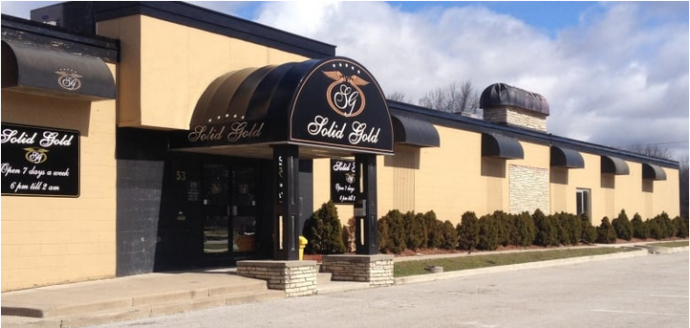 Solid Gold site as it exists today. Building height and transition concerns by clearly explaining planning rationale for where height is being located, ensuring and explaining how height will be regulated, and by reducing losses of sunlight and privacy through appropriate building height transitions.
 Speaking of height limitations – this rendering represents what the owners of Solid Gold want to build on a site that currently has a single story structure. Protect…
Established residential neighbourhoods by ensuring built form, height and transition support and respect existing character, and providing clear policies for heritage protection.
The planners learned that:
Beyond the broad themes highlighted above, a number of key themes specific to the Aldershot GO MTSA also emerged, including the consideration of:
– opportunities for new bike paths, including through Aldershot Park;
– opportunities for amenities to support residents and employees;
– opportunities for complete streets, including Cooke Boulevard;
– ways to manage the impacts of increased traffic along Plains Road;
– opportunities to incorporate mid-rise development along Plains Road and Waterdown Road; and
– excluding the low-density residential properties located on Clearview Avenue and a portion of St. Matthew’s Avenue.
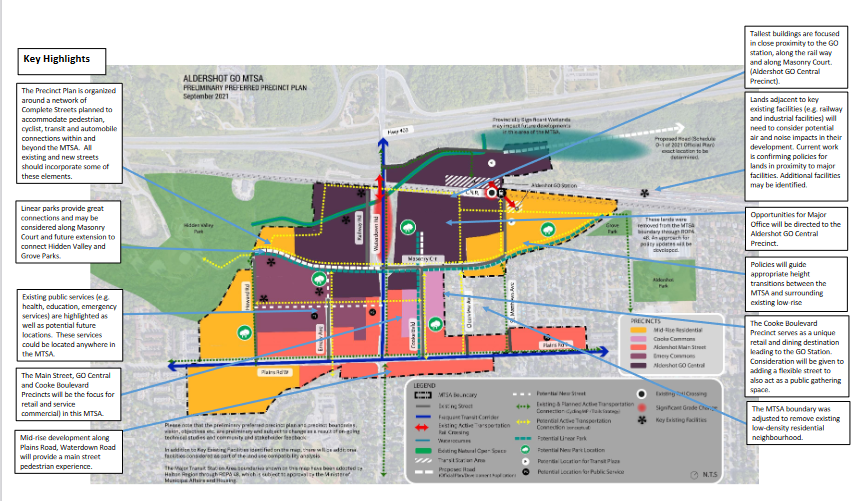 A little more detail on what might go where Now the planners need your feedback. The input you provide may inform:
– Refinements to the vision (i.e. land uses, building heights, urban design considerations etc.);
– Precinct changes (i.e. policy directions, boundaries, built form directions, etc.);
– The preparation of the area-specific plans or the development of policy.
There are more specific details about all of the work that has informed the preliminary preferred precinct plan, including technical studies, can be found at getinvolvedburlington.ca/mtsa.

 By Ray Rivers By Ray Rivers
October 13th, 2021
BURLINGTON, ON
OPINION
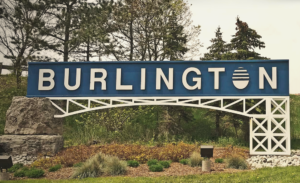 City Council passed resolutions to phase out natural gas Burlington is one of over 30 municipalities, comprising 60% of Ontario’s population, which have passed resolutions for Ontario to phase out natural gas electrical production by 2030. They get it. Fires, floods, droughts, insects, storms – climate change will affect us all. This week, Canada has been accused of being one of the top 10 countries by most responsible for bringing climate destruction upon the world. On a per capita basis, we rank No. 1.
Nature Climate Change, has published a new scientific report examining 100,000 events and concluding that 80% of our global land mass and 85% of the world’s population has already been affected by global climate change. The World Health Organization, the UN and health care practitioners have pointed out that air pollution from burning fossil fuels, which also drives climate change, is causing more than seven million premature deaths each year, that’s 13 deaths every minute – and almost twice what we have seen with the COVID pandemic.
Ontario was the first jurisdiction in North America to ban burning coal for electricity production, in part to clear the air of smog pollution, but also to reduce the province’s carbon footprint. By 2014, the government had shuttered the largest greenhouse gas (GHG) point source on the continent, reducing greenhouse gas emissions in the province by the equivalent of removing seven million cars off the road.
To replace coal, the province began the process of developing wind and solar energy projects to complement its nuclear and hydro resources. Gas powered electricity was included only as a transitional source while the province fully developed its renewable sources, and to assist with peak power demands
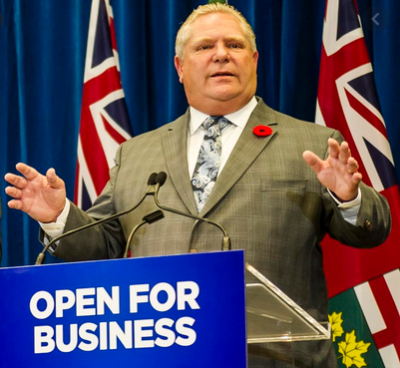 He marches to his own drummer – to a tune that sounds out of key. That all came to a stop with the election of a new government to Queen’s Park in 2018. Premier Ford did everything he could to reverse Ontario’s transition away from fossil fuels and towards renewable energy. He fought the imposition of a federal carbon tax; shut down Ontario’s emissions trading system at a cost of billions; more recently he has acquired new gas plants at a cost of $3 billion; and he has expanded natural gas infrastructure committing thousands more to the continued use of that fossil fuel.
Almost on day one Ford killed every single new renewable project he could, and even stopped those in process – some 700 in total at a cost of hundreds of millions to Ontario ratepayers. His intention was clearly to cripple the province’s renewable energy systems so that when the nukes go down, as they eventually will, natural gas powered electricity will be the only way to keep the lights on.
Natural gas is misnomer. Methane, its real name, is just another fossil fuel, and no more natural than coal or oil. However coal or oil don’t impact our climate unless they are burned. Methane, is a powerful greenhouse gas (GHG) on it’s own, as much as 80 times more potent than carbon dioxide. And methane is released at all stages of its lifecycle, from the well head to the home consumer.
As this is being written Canada is joining other nations in promising to reduce domestic methane emissions by 30%. But what are the chances of that if gas consumption is increased? Ontario will fail to meet the premier’s 30% emissions reduction target if fossil fuel use is expanded. And that would imperil’s Canada’s Paris commitment of a 40% GHG emissions reduction.
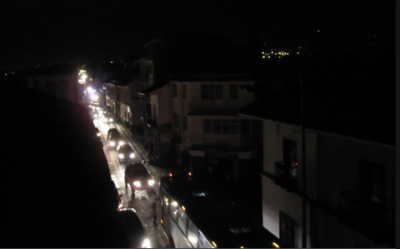 When the lights went out. So when all those municipal resolutions requesting the province phase out gas production started arriving on his desk, Mr. Ford turned to the province’s Independent Electricity System Operator (IESO), which manages the overall provincial supply of electricity. However the IESO is not as independent as their name implies and answered the premier’s call with the exact answer he was looking for. They scribbled two phrases on the back of their provincial pay packets. Phasing out gas by 2030 might mean power shortages and it might mean higher costs.
 But this impact assessment, as they called it, is a sham. Real experts, people like Prof. Mark Jacobson of Stanford University, considered the world’s leading climate technology expert, tells us that gas power plants now cost twice as much as solar power. He should know, his team of engineering scientists and PhDs have been advising governments on renewable energy in over 140 countries, including the White House. And Canada’s ever increasing carbon tax will make the gas alternative even less competitive by 2030. But this impact assessment, as they called it, is a sham. Real experts, people like Prof. Mark Jacobson of Stanford University, considered the world’s leading climate technology expert, tells us that gas power plants now cost twice as much as solar power. He should know, his team of engineering scientists and PhDs have been advising governments on renewable energy in over 140 countries, including the White House. And Canada’s ever increasing carbon tax will make the gas alternative even less competitive by 2030.
This is not the first time an arm of government, even one which calls itself independent, has let the government politicos hold the pen. And scary stories of lights flickering out and hydro bills leaving us without bread on the table could never be more timely with Halloween just around the corner. But this is very much a trick and no treat.
 Wind farm in Eastern Ontario 2030 is only about a decade away. According to the Canadian Wind Energy Association, more wind energy had been built in Canada between 2009 and 2019 than any other form of electricity generation. Over that period wind energy alone went from scratch to meeting the needs of over three million Canadian homes. Does anyone really believe that only gas can keep the lights on? And the cost of wind energy has fallen 70 per cent in the last nine years,
That this IESO report lacks vision is undeniable. And it is shameful that the body which manages energy supply in Canada’s largest province could produce such a rubbish projection. That is what’s really scary – that the folks in charge of our energy supply haven’t a clue about all the technological progress occurring in renewable sources of energy and energy storage systems. And that the IESO has apparently never heard of global warming.
And even when they decide – or are told to – proclaim gas as Ontario’s future energy source, the IESO picked the wrong gas. They barely mention hydrogen gas, particularly for energy storage to back up wind and solar when the weather is uncooperative. The federal government and the oil and gas industry is pouring vast sums of research money into developing green, and even blue, hydrogen resources. And work is progressing on how to adapt existing pipelines for its safe transmission.
 Smog Burlington and the other municipalities deserve better than the slam dunk, shut down they have been handed by the IESO and the premier. Under the IESO plan, methane to produce electricity will skyrocket from 7% to 30% by 2030. The City of Ottawa has rejected the IESO report and demanded they go back to the drawing board. This will also impact the air quality of people living everywhere in the province, since methane burning also yields significant amounts of smog pollution.
What is really scary about this IESO report is that while most countries are trying to reduce their dependence on fossil fuels, the Ontario government is planning a major expansion of its carbon footprint – possibly expanding GHG pollution from the gas plants by more than 300% by 2030.
Even as global leaders sit down to discuss how they can further reduce GHG emissions, Ontario’s premier is thumbing his nose at those efforts. He is swimming against the tide to defy world opinion and federal climate policies. And he is ignoring the will of all the people he claims to represent in this province who, who unlike him, seem to care about the future of this planet.
 Ray Rivers, a Gazette Contributing Editor, writes regularly applying his more than 25 years as a federal bureaucrat to his thinking. Rivers was once a candidate for provincial office in Burlington. He was the founder of the Burlington citizen committee on sustainability at a time when climate warming was a hotly debated subject. Ray has a post graduate degree in economics that he earned at the University of Ottawa. Tweet @rayzrivers Ray Rivers, a Gazette Contributing Editor, writes regularly applying his more than 25 years as a federal bureaucrat to his thinking. Rivers was once a candidate for provincial office in Burlington. He was the founder of the Burlington citizen committee on sustainability at a time when climate warming was a hotly debated subject. Ray has a post graduate degree in economics that he earned at the University of Ottawa. Tweet @rayzrivers
Background links:
Ontario Coal Phase Out – Methane Emissions – IESO Study –
Ontario Energy Policies – Wind Power Cost – Australia Battery Storage –
Climate Change Impacts – Canada Methane Commitment – 7 Million Deaths –

|
|
 By Pepper Parr
By Pepper Parr Someone somewhere in the bureaucracy said walk-ns were permitted – all you had to do was show up and you could get your first shot; your second or the booster shot.
Someone somewhere in the bureaucracy said walk-ns were permitted – all you had to do was show up and you could get your first shot; your second or the booster shot.













 By Ray Rivers
By Ray Rivers

 And then there is housing. Housing prices have been rising for a while now. And while low interest rates, allowing more people to qualify for mortgages, are partly responsible, the real culprit is the extremely high rate of immigration. Canada’s immigration target is 400,000 new entrants a year, over 100,000 of those looking for housing in the GTA.
And then there is housing. Housing prices have been rising for a while now. And while low interest rates, allowing more people to qualify for mortgages, are partly responsible, the real culprit is the extremely high rate of immigration. Canada’s immigration target is 400,000 new entrants a year, over 100,000 of those looking for housing in the GTA.
 Ray Rivers, a Gazette Contributing Editor, writes regularly applying his more than 25 years as a federal bureaucrat to his thinking. Rivers was once a candidate for provincial office in Burlington. He was the founder of the Burlington citizen committee on sustainability at a time when climate warming was a hotly debated subject. Ray has a post graduate degree in economics that he earned at the University of Ottawa. Tweet @rayzrivers
Ray Rivers, a Gazette Contributing Editor, writes regularly applying his more than 25 years as a federal bureaucrat to his thinking. Rivers was once a candidate for provincial office in Burlington. He was the founder of the Burlington citizen committee on sustainability at a time when climate warming was a hotly debated subject. Ray has a post graduate degree in economics that he earned at the University of Ottawa. Tweet @rayzrivers



 By Connie Price
By Connie Price

 There is a lot of work done to get the drafts of the budget completed including presentations to Council at Standing Committees.
There is a lot of work done to get the drafts of the budget completed including presentations to Council at Standing Committees.









 By Ray Rivers
By Ray Rivers








 Mayor Meed Ward invited all the members of the OBCM – Ontario Big City Mayors to hold their October 15th meeting in Burlington at the Pearle Hotel and Spa.
Mayor Meed Ward invited all the members of the OBCM – Ontario Big City Mayors to hold their October 15th meeting in Burlington at the Pearle Hotel and Spa.

 By Pepper Parr
By Pepper Parr Later today Burlingtonians will watch a live streamed video of the Remembrance Day service and remember the fallen and those who served in the wars we have fought – all in the name of the democracy we cherish but don’t always observe or respect.
Later today Burlingtonians will watch a live streamed video of the Remembrance Day service and remember the fallen and those who served in the wars we have fought – all in the name of the democracy we cherish but don’t always observe or respect.

 By Pepper Parr
By Pepper Parr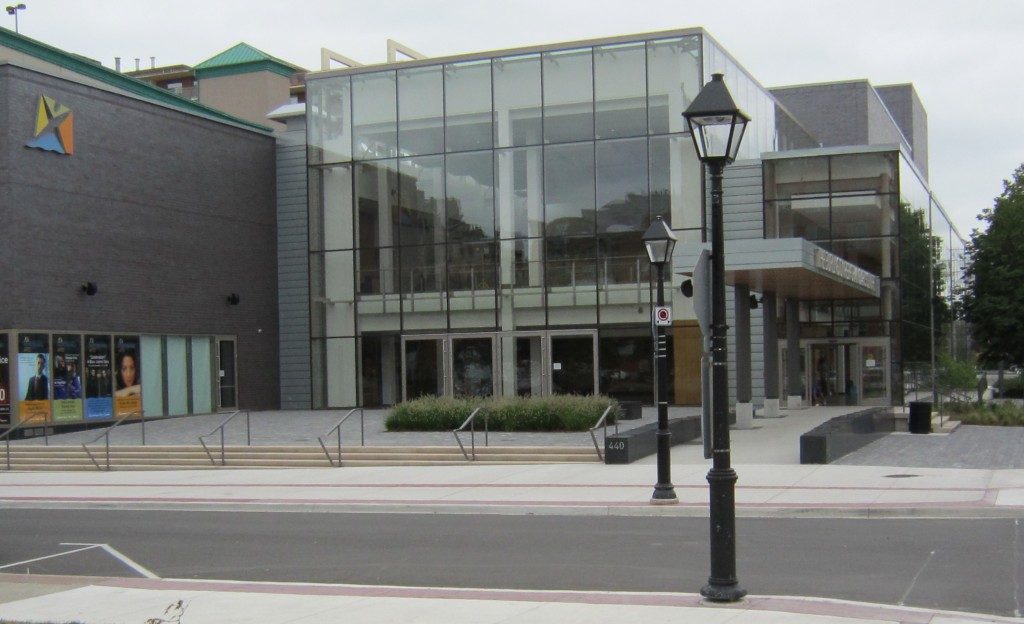

 Also as far as “dipping into reserves for a rainy day” 😮 – we have suffered 500 COVID rainy days running now.
Also as far as “dipping into reserves for a rainy day” 😮 – we have suffered 500 COVID rainy days running now.



























